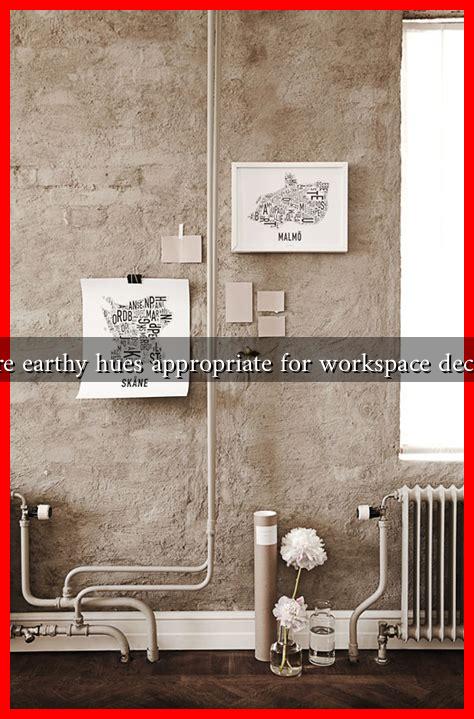-
Table of Contents
Are Earthy Hues Appropriate for Workspace Decor?
In recent years, the trend of incorporating earthy hues into workspace decor has gained significant traction. As more companies and individuals recognize the importance of creating a conducive work environment, the choice of color plays a crucial role in influencing mood, productivity, and overall well-being. This article explores the appropriateness of earthy hues in workspace decor, backed by research, case studies, and expert opinions.
The Psychology of Color in Workspaces
Color psychology suggests that different colors can evoke specific emotions and behaviors. Earthy hues, which include shades of brown, green, beige, and terracotta, are often associated with nature, stability, and comfort. Here’s how these colors can impact the workspace:
- Green: Often linked to tranquility and balance, green can reduce anxiety and promote a sense of calm. Studies have shown that exposure to green environments can enhance creativity and focus.
- Brown: This color conveys reliability and stability. It can create a warm and inviting atmosphere, making employees feel more grounded and secure.
- Beige and Taupe: These neutral tones can serve as a perfect backdrop, allowing other design elements to shine while maintaining a serene environment.
Benefits of Earthy Hues in Workspaces
Incorporating earthy hues into workspace decor offers several benefits that can enhance employee satisfaction and productivity:
- Improved Mood: Earthy colors can create a calming environment, reducing stress and promoting a positive mood among employees.
- Enhanced Focus: Natural colors can help minimize distractions, allowing employees to concentrate better on their tasks.
- Connection to Nature: Biophilic design, which emphasizes the connection between humans and nature, has been shown to improve well-being and productivity. Earthy hues can mimic natural elements, fostering this connection.
Case Studies: Successful Implementation of Earthy Hues
Several companies have successfully integrated earthy hues into their workspace decor, resulting in positive outcomes:
- Google: The tech giant has incorporated green and brown tones in various office spaces, creating a relaxed atmosphere that encourages creativity and collaboration.
- Airbnb: Their offices feature earthy tones that reflect their commitment to sustainability and connection to nature, enhancing employee satisfaction and engagement.
- WeWork: Many WeWork locations utilize earthy hues to create inviting and comfortable co-working spaces, which have been linked to increased productivity among freelancers and entrepreneurs.
Statistics Supporting Earthy Hues in Workspaces
Research supports the idea that color choice can significantly impact workplace dynamics:
- A study by the University of Texas found that employees working in environments with natural colors reported a 15% increase in productivity.
- According to a survey by the American Psychological Association, 85% of employees feel more relaxed and focused in spaces decorated with earthy tones.
Practical Tips for Incorporating Earthy Hues
If you’re considering integrating earthy hues into your workspace, here are some practical tips:
- Choose a Color Palette: Select a combination of earthy tones that complement each other. For example, pairing olive green with warm beige can create a harmonious look.
- Use Accent Walls: Consider painting one wall in a bold earthy hue to create a focal point without overwhelming the space.
- Incorporate Natural Materials: Use wooden furniture or decor items made from natural materials to enhance the earthy aesthetic.
Conclusion
In conclusion, earthy hues are not only appropriate but also beneficial for workspace decor. Their ability to create a calming, productive environment makes them an excellent choice for modern workspaces. As companies continue to prioritize employee well-being and productivity, the integration of earthy tones can serve as a powerful tool in achieving these goals. By understanding the psychological impact of color and implementing thoughtful design strategies, businesses can foster a workspace that enhances creativity, focus, and overall satisfaction.
For more insights on workspace design and color psychology, you can visit Color Psychology.


